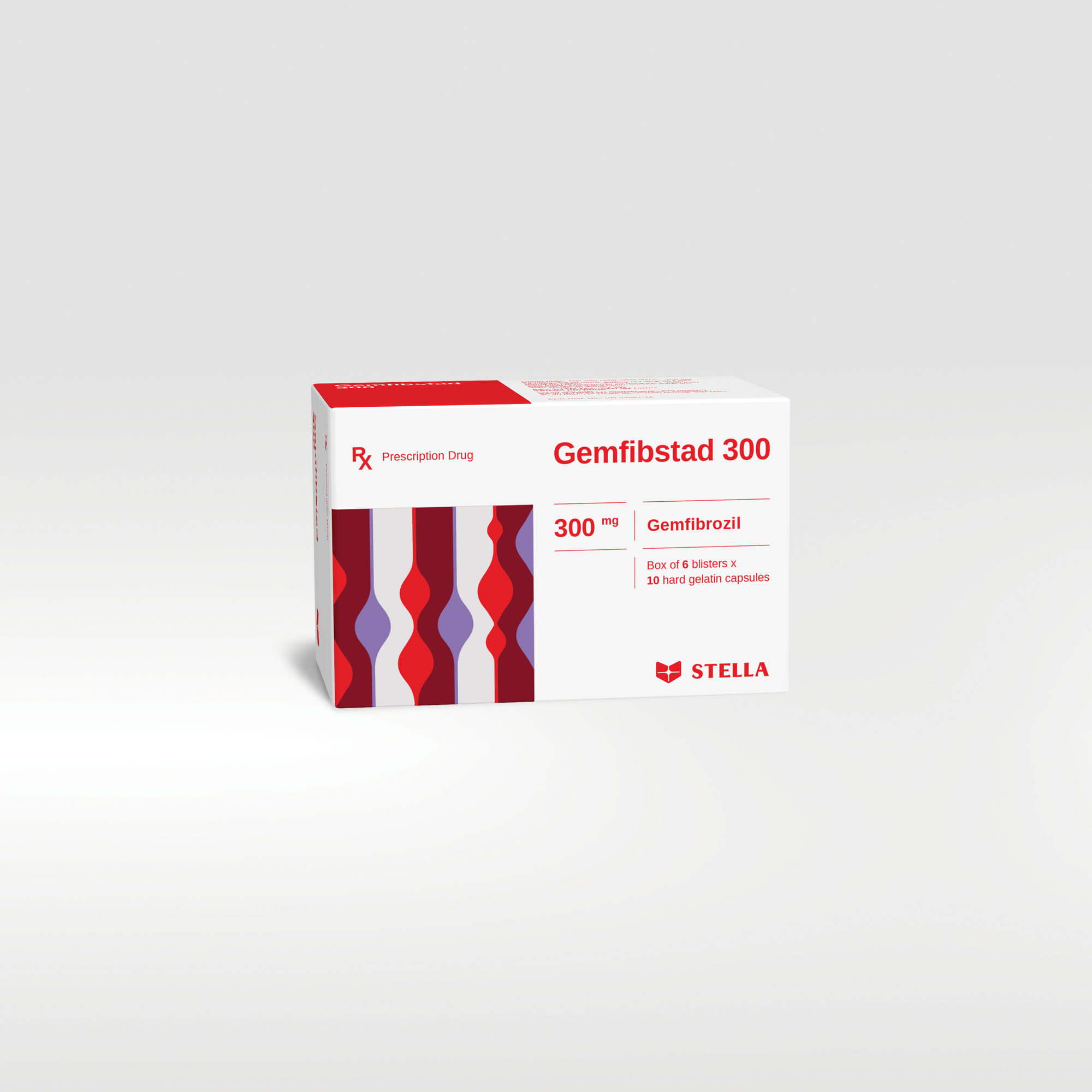Indications
Gemfibstad 300 is indicated as an adjunct to diet and other non-pharmacological treatment (e.g. exercise, weight reduction) for the following:
- Treatment of severe hypertriglyceridaemia with or without low HDL cholesterol.
- Mixed hyperlipidaemia when a statin is contraindicated or not tolerated.
- Primary hypercholesterolaemia when a statin is contraindicated or not tolerated.
- Primary prevention.
- Reduction of cardiovascular morbidity in males with increased non-HDL cholesterol and at high risk for a first cardiovascular event when a statin is contraindicated or not tolerated.
Dosage
- Adults: The dose range is 900 mg to 1200 mg daily.
The 900 mg dose is taken as a single dose half an hour before the evening meal.
The 1200 mg dose is taken as 600 mg twice daily, half an hour before breakfast and half an hour before the evening meal.
- Elderly (over 65 years old): As for adults.
- Due to the lack of data the use of gemfibrozil in children is not recommended.
- Renal impairment: In patients with mild to moderate renal impairment, start treatment at 900 mg daily and assess renal function before increasing dose.
- Gemfibrozil should not be used in patients with hepatic impairment, severely impaired renal function.
Usage
- Gemfibstad 300 should be taken orally.
- Prior to initiating gemfibrozil, other medical problems such as hypothyroidism and diabetes mellitus must be controlled as best as possible and patients should be placed on a standard lipid-lowering diet, which should be continued during treatment.













